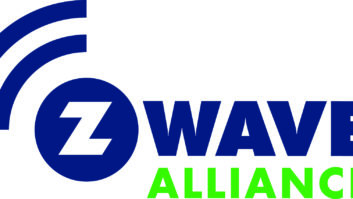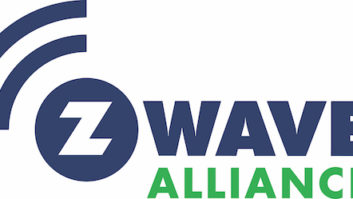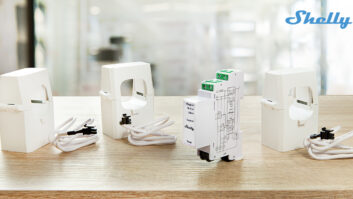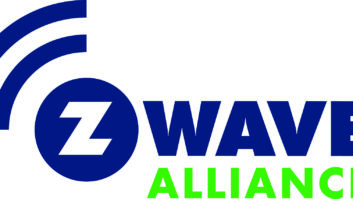If individual smart home systems were the sorts of things we wrote books about, the story of my dad’s Z-Wave home would be named Better Late Than Never. I’ve been pestering him for years to let me install some automation, but it wasn’t until a supply line washer in his guest bathroom broke and flooded the house (to the tune of $18,000 worth of damage) that he took me up on it.
And lest you think that lightning never strikes twice, the resulting system, which includes a water shutoff valve and leak sensors in the washrooms, under sinks, and beside the hot water heaters in the attic, has since saved him from an identical catastrophe. The leak sensor in the half-bath up front caught a similar washer failure in time to cut the flow of water to the house, and instead of dealing with insurance adjusters and mold amelioration for the second time in nine months, he merely had to do a bit of mopping up. It certainly hasn’t been cheap automating Pop’s home with Z-Wave, but in that one instant, the system pretty much paid for itself. If only he had let me install all of this a year earlier…

The Certified Installer Toolkit comes with both wired and wireless network connections and a handful of ways to add it to, and identify it, on the home network.
I bring all of this up because I recently added a new component to his smart home system–in typical fashion, a little too late. But just as typically, it’s already reaping rewards. The new Z-Wave Certified Installer Toolkit is a network-attached diagnostic and troubleshooting device available exclusively to Z-Wave Alliance members for $299 (plus shipping), and if it had existed last year when I was first automating Pop’s home, it would have saved me way more than $299 in wasted time.
How so? Well, if you’re familiar with Z-Wave, you know that it’s a mesh network. Commands sent from a hub to a dimmer or thermostat or shutoff valve don’t necessarily take a direct path. They hop from device to device, and each device you add to your system strengthens the range and integrity of the control network. Conversely, if you leave too much real estate between two Z-Wave devices, the outlier might not always work reliably, if at all.
Such was the case when I first set up Pop’s system. More than just about anything (water protection aside), the one thing he really wanted was some way to receive pop-up notifications from his SmartThings app when the mail was delivered. His house isn’t in the city, so mail delivery isn’t always predictable, and at his age he was growing tired of making the long walk up his driveway a few times a day to check for deliveries. So, in typical me-and-Pop fashion, we took apart a tilt sensor designed for garage doors, reconfigured its orientation, and installed it inside the door of his mailbox. The problem, though, is that it was too far out of range to really work reliably every day.
The Z-Wave Certified Installer Toolkit (CIT for short) would have saved us a lot of time and energy wasted on installing new devices (smart plugs, smart light bulbs, etc.) closer to the corner of his house to bridge the gap between hub and tilt sensor, because one of its most handy features is a Z-Wave network map that allows you to figure out exactly what connections exist between installed devices, how strong those links are, and where you might need a bit of reinforcement.
The box comes with both wired and wireless network connections and a handful of ways to add it to, and identify it, on the home network. In my case, I connected it via Ethernet, dialed my browser to findcit.z-wavealliance.org, registered it using my Z-Wave Alliance credentials, and that’s pretty much that. I can now log into the CIT from anywhere in the world, so long as I have internet access.
With that done, you simply have to put your hub of choice into device discovery mode, poke a button on the CIT’s web interface, and it immediately starts interviewing and monitoring your entire Z-Wave system.
Devices are identified at first only as mains-powered or battery-powered, but dig a little deeper into the interview results for each device and you can see what command classes it supports, as well as, in some cases, the manufacturer of said device, which is usually enough to tell you what it is. Once you do figure out what each device is, you can rename them quickly and simply for easier identification as you pour over the diagnostics and analytics.

The CIT’s Z-Wave network map allows you to figure out exactly what connections exist between installed devices, how strong those links are, and where you might need a bit of reinforcement.
Not everything else about the CIT’s interface is quite so intuitive, so it’s handy that there’s a densely packed, 85-page user guide linked right from the home page every time you log in. I highly recommend giving it a read before going too far into the CIT’s numerous screens, because it not only does a thorough job of explaining what everything is and does, but also gives some handy tips and tricks for what’s normal and what’s not.
Other handy features include lists of which devices in your control system are Z-Wave Plus and which aren’t, which devices support Network Wide Inclusion, and the current Z-Wave version and firmware version of connected devices. If you’re using the CIT locally, you can also use it to perform firmware updates, if necessary. Leave a CIT connected to a system for an extended period of time and you can also access histories pertaining to performance and connectivity.
Granted, you almost certainly don’t need to permanently add a CIT to every Z-Wave control system you install, but it might not be a bad idea with those larger, more expensive systems, given the relative value of the device versus repeated truck rolls. And even if you’re not installing those sorts of systems, it’s worth having one CIT in your truck for use during every initial Z-Wave system installation, no matter how large or small.
As I said above, my experience with installing extensive, whole-home Z-Wave control systems begins and ends with my dad’s house, and the CIT would have paid for itself in time saved alone, if only I’d had it a year ago. Even as a late arrival, though, it’s allowed me to make tweaks to Pop’s system (moving a rarely used smart bulb from the side door entrance to the garage to shore up some weak connections between devices, for example) that have already resulted in improvements to the reliability of that mail-delivery sensor.
510.897.0200
z-wavealliance.org
Kudos
Pretty much everything you need to analyze, troubleshoot, and monitor the health of a Z-Wave network in one easy-to-install device? What more could an integrator want?
Concerns
Well, perhaps a more intuitive interface would be nice. The CIT browser UI can be a little confusing at first, and you need to read the better part of its 85-page manual to really understand the function of all the screens and settings.
Product Specs
► SoC: Broadcom BCM2837
► CPU: 1.2GHz 64/32-bit Quad-Core ARM Cortex-A53
► RAM: 1 GB LPDDR2 @ 900MHz
► Storage: MicroSDHC
► Wireless (1): WiFi 2.4GB b/g
► Wireless (2): Z-Wave, 865.2MHz to 926.3MHz depending on country
► Power: Nominally < 4W
► Dimensions: 90 x 70 x 27 mm
► Connectivity:
► 1 – Ethernet
► 4 – USB A
► 1 – 3.5mm Audio
► 1 – Micro USB



